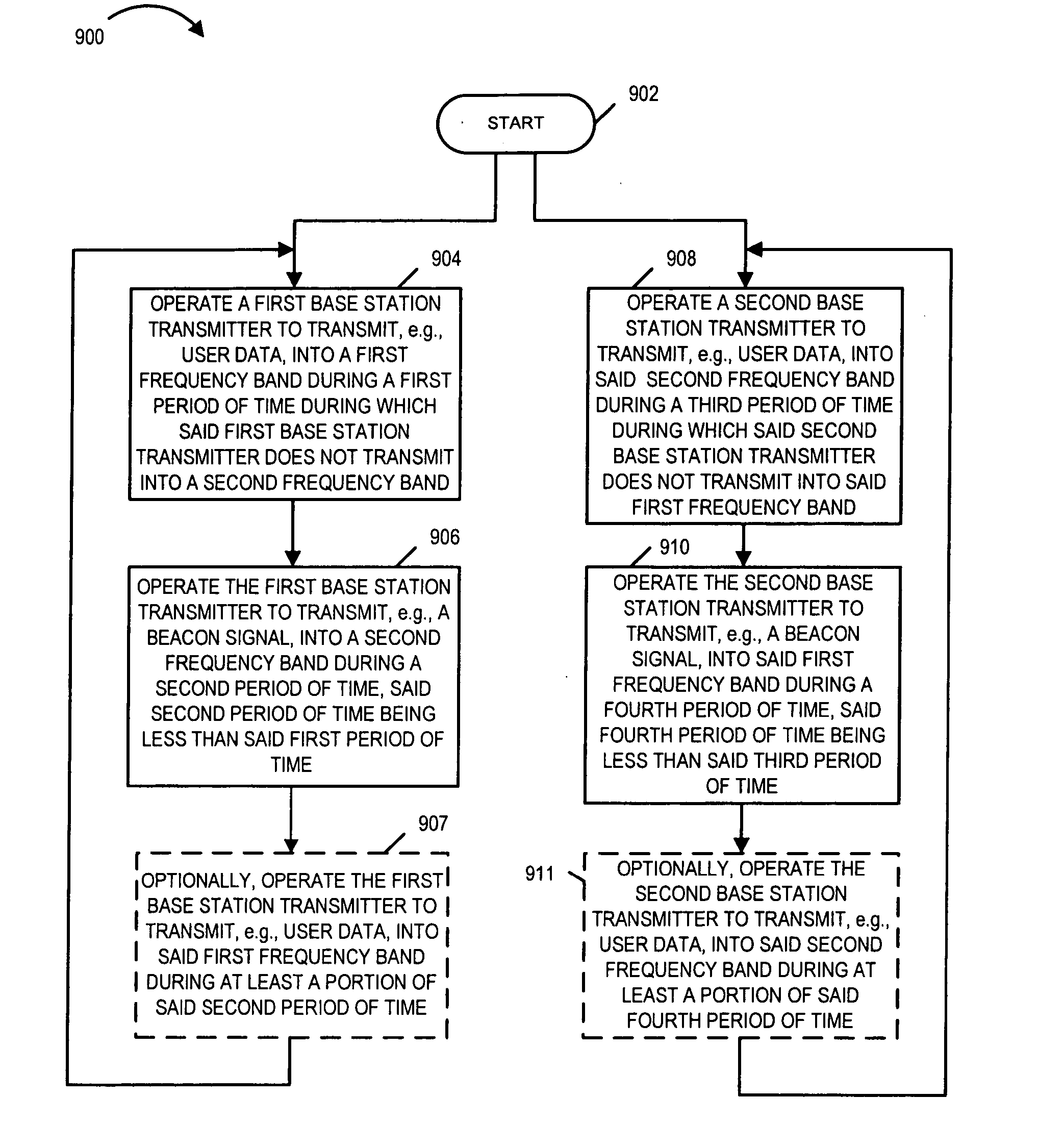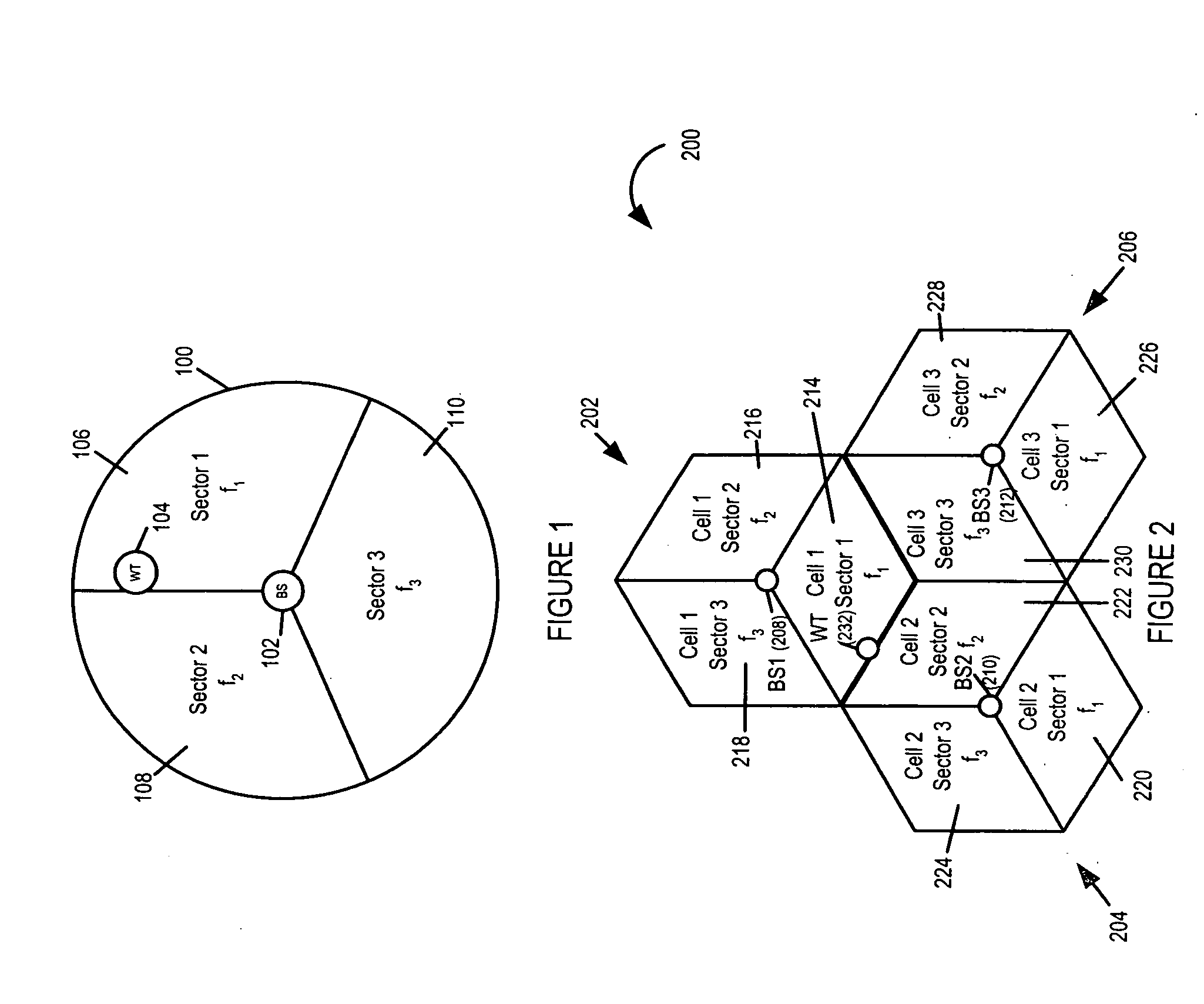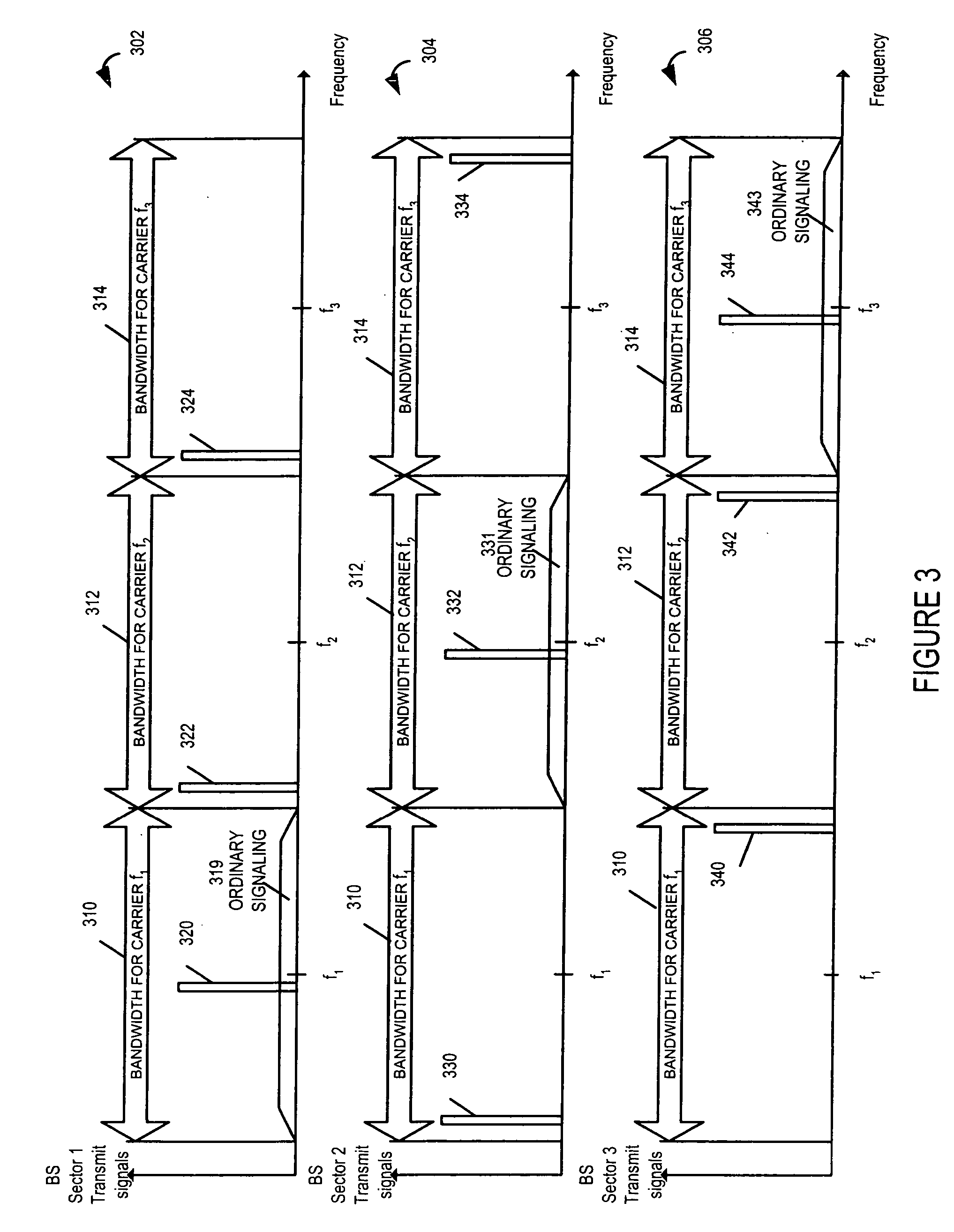Methods and apparatus of improving inter-sector and/or inter-cell handoffs in a multi-carrier wireless communications system
- Summary
- Abstract
- Description
- Claims
- Application Information
AI Technical Summary
Benefits of technology
Problems solved by technology
Method used
Image
Examples
Embodiment Construction
[0025] Each cell includes a base station which transmits different signals into each sector of a cell. Each cell includes one or more sectors. Separate antenna and / or transmitter may be provided for each sector of a cell. The base station, in accordance with the invention, transmits multiple beacon signals, e.g., at different times, from each sector of a cell. One or more beacon signals are normally transmitted within the frequency band used by the particular sector to communicate information, e.g., user data and / or control information intended for specific individual wireless terminals, to wireless terminals within the sector. User data may include text data, voice data and / or other types of user application data. Such beacon signals can be used to convey information, e.g., a sector identifier, a cell identifier, and / the carrier frequency used in the sector. In accordance with the present invention, the base station uses a sector transmitter to periodically transmit a beacon signal...
PUM
 Login to View More
Login to View More Abstract
Description
Claims
Application Information
 Login to View More
Login to View More - R&D
- Intellectual Property
- Life Sciences
- Materials
- Tech Scout
- Unparalleled Data Quality
- Higher Quality Content
- 60% Fewer Hallucinations
Browse by: Latest US Patents, China's latest patents, Technical Efficacy Thesaurus, Application Domain, Technology Topic, Popular Technical Reports.
© 2025 PatSnap. All rights reserved.Legal|Privacy policy|Modern Slavery Act Transparency Statement|Sitemap|About US| Contact US: help@patsnap.com



